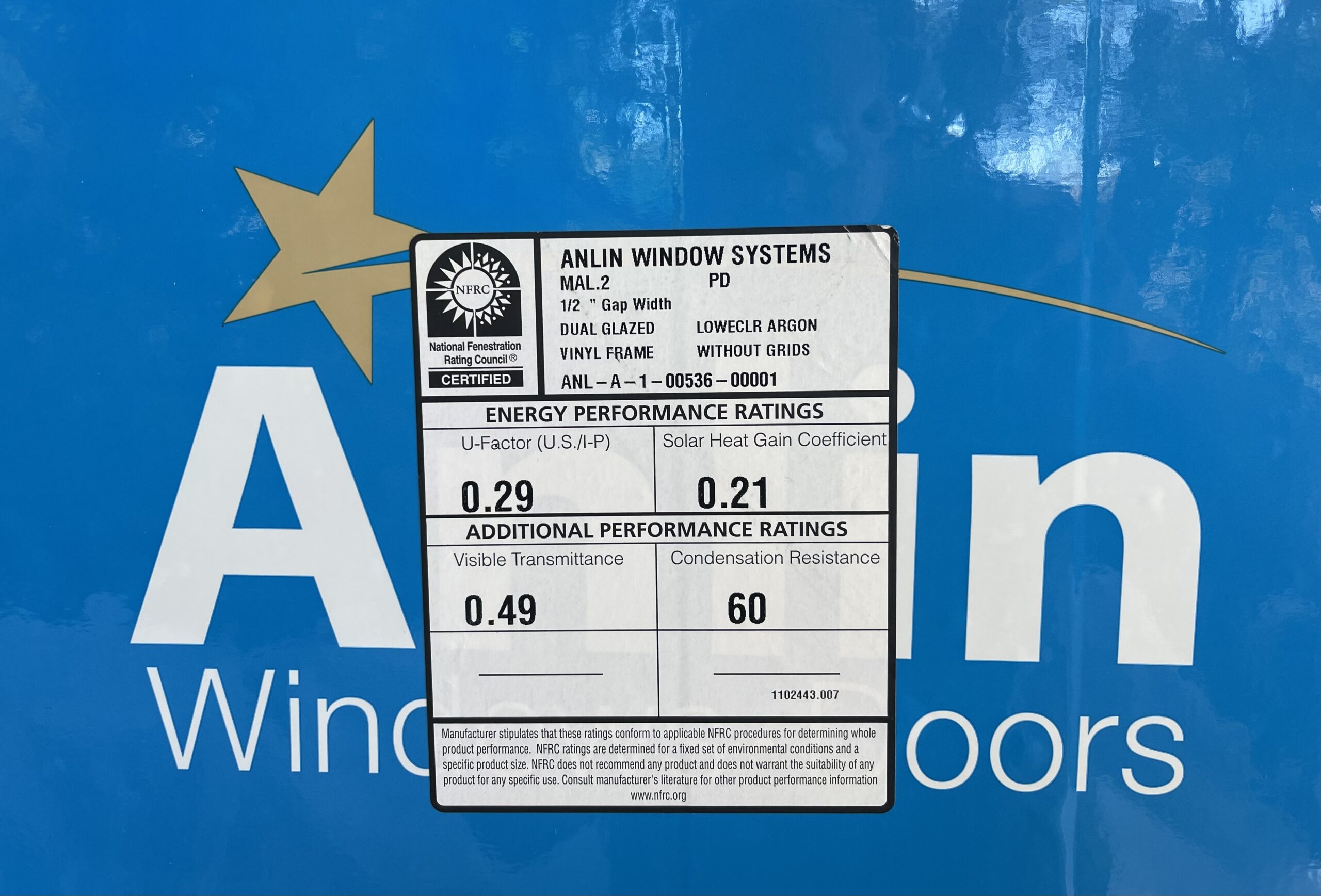
Understanding the Energy Performance Rating of your Anlin Windows
The National Fenestration Rating Council (NFRC) operates a voluntary program that tests, certifies, and labels windows and doors, based on their energy performance ratings. The NFRC label provides a reliable way to determine a window’s energy properties and to compare products.
The NFRC label can be found on all ENERGY-qualified windows and doors, replacing old windows with ENERGY STAR-certified windows lowers household energy bills by an average of up to 13 percent nationwide when replacing single-pane windows. Lower energy consumption also reduces greenhouse gas emissions from power plants and homes.
ENERGY STAR bases its rating solely on U-factor and Solar Heat Gain Coefficient ratings. But the NFRC label also provides Visible Transmittance and Air Leakage ratings which are described below.
U-Factor measures how well a product can keep heat from escaping of a room. The lower the number, the better a product is at keeping heat in. According, to the International Association of Certified Home Inspectors (InterNACHI), the best, high-performance, double-pane windows may have a U-factor of 0.30 or lower, indicating that they are very energy-efficient. Manufacturers have started to incorporate low-emittance coatings and gas fills between panes in attempts to further decrease U-factors and provide an even
more energy-efficient product.
Range: 1.20-1.20
Look for: Low numbers.
Solar Heat Gain Coefficient (SHGC) measures how well a product can resist unwanted heat gain from sunlight, which is especially important during the summer cooling season. The lower the number, the less you’ll spend on cooling. Accordingly, to The Energy Conservation For Environmental Protection Summer 2022 It is estimated that in 1990 alone, the energy used to offset unwanted heat losses and gains through windows in residential and commercial buildings cost the United States \$20 billion (one-fourth of all the energy used for space heating and cooling). However, when properly selected and installed, windows can help minimize a home’s heating, cooling, and lighting costs.
Range: 1.20-1.20
Look for: Low numbers.
Visible Transmittance (VLT) measures how well a product is designed to effectively light your home with daylight, potentially saving you money on artificial lighting. The higher the number, the more natural light is let in. Accordingly, to Anlin Windows & Doors The VLT measures how well the window or door allows natural light in. For this measurement you will want to look for higher numbers, the larger the number means more natural light is let in. Homeowners can turn off their lights and let nature light their homes, spending less money on electric bills.
Range: 0-1
Look for: High numbers.
Air Leakage (AL) measures how much air will enter a room through a product. The lower the number, the fewer drafts you’ll experience. Accordingly, to Anlin Windows & Doors The more air exchanges you have, the more times your heating and cooling system has to recondition the air in the room. To meet the standards of the American Architectural Manufacturers Association (AAMA), a window must achieve an air leakage or air infiltration rating below .30 cubic feet per minute at 25 miles per hour wind-load.
Range: ≤ 0.3
Look for: Low numbers.
Recommended Performance Ratings by Climate Zone
Review the state fact sheets or use the window selection tool for new construction or existing homes from the Efficient Windows Collaborative to determine the desired performance ratings for your climate.
If you’re looking for a trusted window replacement company that checks all the boxes mentioned above, contact CGH Solutions. With our years of experience, a wide range of window options, and a commitment to quality and customer satisfaction, CGH Solutions is here to help you transform your home. Contact us today at 323-859-6634 for a consultation and let us be your partner in enhancing your living space with beautiful and energy-efficient windows








